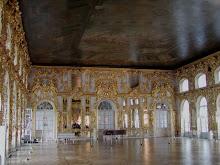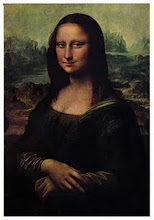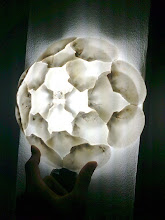Sunday, September 26, 2010
at
11:28 PM
|
0
comments
SILVER AND CERAMICS
An archaeological find such as the Boscoreale. Treasure, probably buried by the eruption of Vesuvius in 69 AD and now in the Louvre, is ample proof of the high quality of Roman silverware. The luxurious items were for the domestic use of people with the means to purchase heavy tableware in such prestigious material. The carafes, vases and salt cellars were hidden in haste. They are decorated in relief, and one cup, now destroyed, bore a scene of homage to Augustus. A similar hoard, unearthed at Hildesheim and now in Berlin, tends to indicate the absence of silversmiths’ workshops in these regions. The sixty or so pieces may well have been looted from a number of smaller collections in Italy. The delicate ornamental motifs of griffins, putti and foliage which completely cover the surface of the bowls and other vessels are proof of a very close relationship with the monumental art of the Augustan period, in particular the paintings and stuccowork of the Villa Farnesina. This type of silverware was also an important influence on ceramicists, who appear to have imitated it, particularly at Arezzo. The repoussé technique in vogue until the mid-first century AD, gradually gave way to casting. Gallo-Roman workshops, for instance, used the latter technique almost exclusively. Then, during the late third century, repoussé decoration seems to have made a comeback and became the standard technique in the late Empire. To this period belong silver caskets with pagan and Christian motifs, boxes and reliquaries, ewers or oinochoes (wine—jugs) and flasks. Plates continued to be east, and were sometimes decorated using the niello engraving technique. Among the characteristic artefacts of this period are the silver ewer owned by the Cleveland Museum of Art and the Louvre oinochoe, which is decorated with hunting scenes, animals and leaf patterns. The motifs arc akin to those found in fourth- century mosaics. The links between the different media are worth emphasizing in this context.
As well as silver, pottery was widely used for household purposes. We have already seen how terracotta was sometimes used as a substitute material for small—format sculptures, architectural features, busts and portraits. But, in Roman times, it was ceramics that accounted for mass production in this field. Everyday pottery was made in various styles: with a black or brown glaze, particularly for drinking vessels; with a golden glint to it, reminiscent of a metal finish; with the inner surfaces in red or brown; with a polished, slip finish; or in a more basic style, with neither slip nor colour, for cooking purposes. Roman pottery was produced from moulds, with relief decoration reflecting the period, region, technique and workshop.
Towards the middle of the first century BC, black-glaze pottery, which had been produced in many local styles throughout the Mediterranean region, disappeared and was replaced by “Arretine” ware (terra sigillata), the essential characteristics of which were its fine, glossy surface and a colour ranging from deep orange to cherry red. The potters of Arretium (modern Arezzo) specialized in this fine tableware, which was manufactured in imitation of silverware. The decoration was generally limited to stamped relief motifs or incisions made directly in the clay, but some forms, such as bowls, craters and cups, were figured or ornamented with more complex scenes. Pottery of this kind was famous in ancient times. In the middle of the first century AD, Northern Italian and Gaulish imitations began to compete effectively with the Arretine ware, before being overtaken in their turn by a lighter orange tableware from North Africa. Roman ceramics are, of course, a study in themselves. It is only their iconography and certain decorative reliefs that interest us in our study of sculpture proper.
Posted by
jokjak














